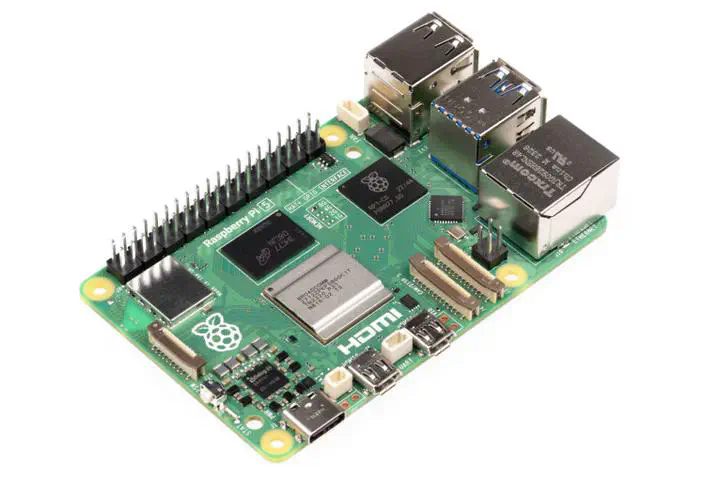Unlocking the potential of deep learning models with Raspberry Pi 5
 Picture credits: Kiwi Electronics
Picture credits: Kiwi ElectronicsAt Training Data Lab, we focus on developing innovative solutions that combine the power of deep learning and energy efficiency. We recently decided to use Raspberry Pi 5 to deploy deep learning and language models such as LLaMA and Mistral for our research projects. This text will explain how this choice will allow us to reduce costs and carbon footprint associated with cloud computing.
The problem: Reliance on cloud computing
In the digital age, cloud computing has revolutionised how we process and analyse large amounts of data. However, this has led to an increasing reliance on cloud computing, which can have negative effects on costs and carbon footprint. According to a Greenpeace report, 70% of greenhouse gas emissions associated with the technology come from cloud data infrastructure.
The solution: Raspberry Pi 5
In search of a more sustainable and efficient solution, we decided to use Raspberry Pi 5 to deploy our deep learning and language models by our researcher Bastián González-Bustamante. This small computer board can run Python and other applications with very low power consumption. Like other open-source projects, Raspberry Pi 5 is an excellent choice for developers and scientists looking to create innovative solutions without the need to invest in large installations.
LLaMA and Mistral: Deep learning models
At Training Data Lab, we are interested in applying deep learning to different research problems. LLaMA and Mistral are two deep learning models that we have selected to deploy on Raspberry Pi 5. LLaMA is a deep learning model based on Transformers that is successfully used in classification and text generation tasks. Mistral, on the other hand, is a language model based on the BERT (Bidirectional Encoder Representations from Transformers) architecture that is used for natural language processing tasks.
Advantages of using Raspberry Pi 5
The choice of Raspberry Pi 5 allows us to enjoy several advantages:
- Reduced costs. We do not need to invest in large installations or cloud computing services, significantly reducing our costs.
- Energy efficiency. Raspberry Pi 5 has very low power consumption, which helps reduce our carbon footprint and contributes to greater sustainability.
- Flexibility. We can run Python and other applications on the board, which allows us to be more flexible in our projects and easily adapt to changes.
- Collaboration. The ability to collaborate with other researchers and developers is greatly enhanced by the ease of sharing code and results.
Conclusion
At Training Data Lab, we are committed to innovation and sustainability. Our choice to use Raspberry Pi 5 to deploy deep learning and language models such as LLaMA and Mistral allows us to reduce costs and carbon footprint associated with cloud computing. At the same time, we can enjoy the benefits of the flexibility and collaboration offered by this computing board. We hope that our project will inspire other researchers and developers to explore the possibilities of sustainability in the field of data and machine learning.
* AI-generated text
Read more about how we generate our content